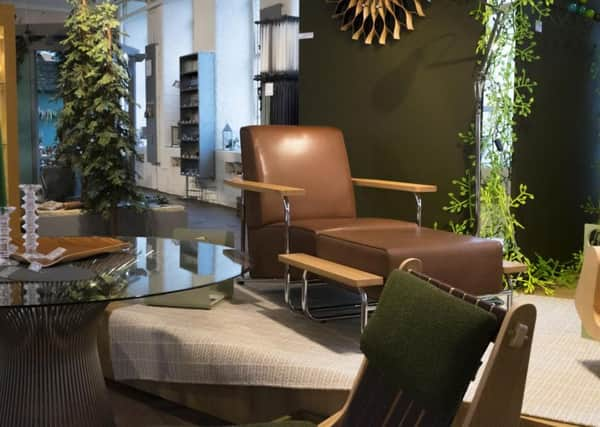Our homes will be global in or out of the EU


The first incarnation of European integration, The European Coal and Steel Community, was established in 1951 with the aim of rationalising these industries and ensuring peace throughout Europe. Six years later, in the golden period of Midcentury Modernism, this morphed into the European Economic Community (known as The Common Market) with the signing of The Treaty of Rome. In 1973, sixteen years later, in we jumped joining eight other European countries after trying to apply for membership for 12 years. All this came just after the pioneering introduction of cheap flights to America (remember Freddie Laker’s Skytrain?) and even cheaper flights to Spain and Italy.
With this growing exposure to foreign travel combined with better logistics and faster freight movement, the floodgates to international influences were opened even further. Olive oil, for example, began to be drizzled on salads. Remember that only a couple of generations ago, olive oil was sold in chemists, warmed before use and put in your ears to combat ear ache. Today, olive oil is classified by The Office of National Statistics as a “staple” commodity used regularly in over 58 per cent of homes.
Advertisement
Hide AdAdvertisement
Hide AdWith wider European travel came our introduction to the “bidet” even though most holidaymakers never used them and often did not know what exactly they were for. Although they were heavily satirised in the film “Carry On At Your Convenience,” in the 1970s and there was a sudden rush to fit bidets in bathrooms (especially avocado green ones). Today, however, they have been cast into the fashion bin and it is rare to see a bidet in a bathroom showroom today.
Although Heinz tinned spaghetti had been imported from America since the 1920s, with our membership of the E.E.C. came a huge variety of pasta - all shapes and sizes and fresh, dried or in ready meals. There are now almost 400 types on sale here. Mind you, we still have a long way to go to catch up on Italian consumption which is 26 kilos per person each year, ten times what we eat here.
But this internationalism has not been solely a European experience. the trans Atlantic influence is as strong as ever. McDonalds first hit our streets in 1974 when a hamburger cost 15p. Starbucks arrived twenty odd years later. The supermarket concept was imported by Express Dairies in 1951 and forty-five years later, Tesco pioneered the 24 hour version. Most recently, we inherited the internet, Facebook, the smart phone, cable television and over-sized fridge freezers.
On top of all this, just think of the wide range of foods that are now imported from all corners of the globe, the variety of restaurants, the Scandinavian furniture style rendered commonplace when Ikea opened in 1987.
Advertisement
Hide AdAdvertisement
Hide AdCheap air travel has shrunk the world so much so that we can even consider a weekend break to Thailand or Dubai. At the same time, an improved transport infrastructure continues to bring the world into our homes on a daily basis and ever faster. Which ever way the EU referendum vote goes, the one certainty is that the continuing influences on home life from all over the globe will simply not come to an end. In that sense, our homes are truly global.
*Robin and Patricia Silver are owners of The Home store at Salts Mill, Saltaire, www.thehomeonline.co.uk